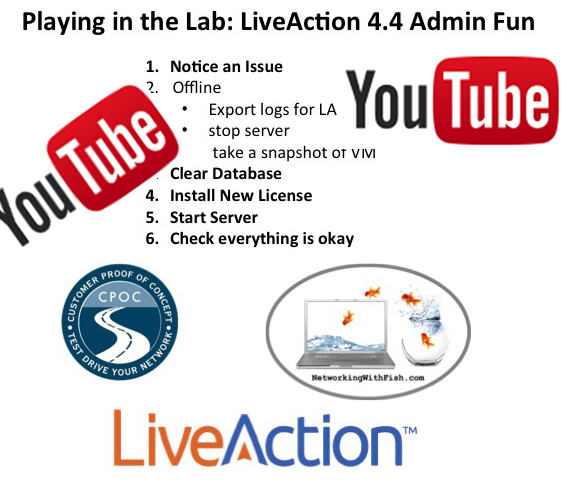You Decide
I’m lucky, my current client has me working in a so-called DevOps team, in a very progressive business unit within a large, stable enterprise. F5 Load balancers are everywhere and the ‘product’ is internet facing, I’m in my element; this is ‘my thing’. The heavy use of iRules means I get to ‘programme’ quite often […]
Author information
The post You Decide appeared first on Packet Pushers Podcast and was written by Steven Continue reading
U can’t touch this
Wouldn’t it be great to deploy network components without touching them 8-) A colleague of my named Joe Neville created nice solution from WAN routers in combination with HP IMC and BIMS. He will make series of post around this … Continue readingBriefing: Project Calico – BGP-driven SDN Without Overlays
The following is a "paper review" of Project Calico following a recent briefing. I've conducted a short review of the technology and business issues around the product and conclude that its unlikely to be competitive with Docker libnetwork that was announced a few weeks back or existing SDN Solutions in the market today.
The post Briefing: Project Calico – BGP-driven SDN Without Overlays appeared first on EtherealMind.
Risky Business #374 — Anti-Flash sentiment sweeps the globe
On this week's show we'll be checking in with Richard Forno on the fallout from the OPM breach. Richard has been kicking around in DC infosec circles for a long time now and he let's us know what the mood is like inside the beltway.
In this week's sponsor interview we chat with Chris Gatford of HackLabs! HackLabs is an Australia-based pentesting and consulting firm and we're speaking to Chris about the changing nature of security consultancies.
Adam Boileau, as usual, joins the show to discuss the week's news, which has been dominated by calls for the axing of the Flash plugin and the continued fallout from the Hacking Team breach.
‘Objection: Puffery!’ Judge Dismisses Part of the Cisco-Arista Lawsuit
 Objection: Marketing puffery!
Objection: Marketing puffery!
Over 200 Docker Meetups!
Big thank you to our Docker community for the support in helping us grow to now over 200 Docker meetup groups! Without all of the Docker meetup organizers, sponsors, speakers and attendees, none of this would be possible – we are … ContinuedCloudRouter Moves Its Open Source vRouter Into Beta
 Does the SDN world want an independent virtual router?
Does the SDN world want an independent virtual router?
Software and the bogeyman
This post about the July 8 glitches (United, NYSE, WSJ failed) keeps popping up in my Twitter timeline. It's complete nonsense.What's being argued here is that these glitches were due to some sort of "moral weakness", like laziness, politics, or stupidity. It's a facile and appealing argument, so scoundrels make it often -- to great applause from the audience. But it's not true.
Legacy
Layers and legacies exist because working systems are precious. More than half of big software projects are abandoned, because getting new things to work is a hard task. We place so much value on legacy, working old systems, because the new replacements usually fail.
An example of this is the failed BIND10 project. BIND, the Berkeley Internet Name Daemon, is the oldest and most popular DNS server. It is the de facto reference standard for how DNS works, more so than the actual RFCs. Version 9 of the project is 15 years old. Therefore, the consortium that maintains it funded development for version 10. They completed the project, then effectively abandoned it, as it was worse in almost every way than the previous version.
The reason legacy works well is the enormous regression testing Continue reading
Installing netmiko on Windows
Netmiko is a Python module by Kirk Byers that provides a wrapper around the Paramiko SSH module for doing screen scraping and CLI automation on network devices.Paramiko has some dependencies that make installation on Windows a tad tricky. Here's a quick way to get it done:
- Install Anaconda.
- From the Anaconda shell, run "conda install paramiko".
- From the Anaconda shell, run "pip install scp".
- Install git for Windows.
- Clone netmiko with "git clone https://github.com/ktbyers/netmiko"
- cd into the netmiko directory and run "python setup.py install".
Installing netmiko on Windows
Netmiko is a Python module by Kirk Byers that provides a wrapper around the Paramiko SSH module for doing screen scraping and CLI automation on network devices.Paramiko has some dependencies that make installation on Windows a tad tricky. Here's a quick way to get it done:
- Install Anaconda.
- From the Anaconda shell, run "conda install paramiko".
- From the Anaconda shell, run "pip install scp".
- Install git for Windows.
- Clone netmiko with "git clone https://github.com/ktbyers/netmiko"
- cd into the netmiko directory and run "python setup.py install".
Playing in the Lab: LiveAction Administrative Fun
I’m newer to LiveAction but what I have seen thus far I have definitely liked. But admittedly with GUIs I sometimes still feel like a “CLI girl living in a GUI world”.
During the past week I was noticing that when I was in my Live Action client view… looking at the “dashboard” I would suddenly find myself back at the main LiveAction client view. I asked a co-worker name Robert if he had ever seen that before. He had not. So I showed it to him. He noticed something I had not. There seemed to be a “trigger event” that was associated with the changing screens.
…. Hope you have fun with the video and playing in the lab with me. 
Click on the diagram below to go play. 
Approx time: 16 Minutes
